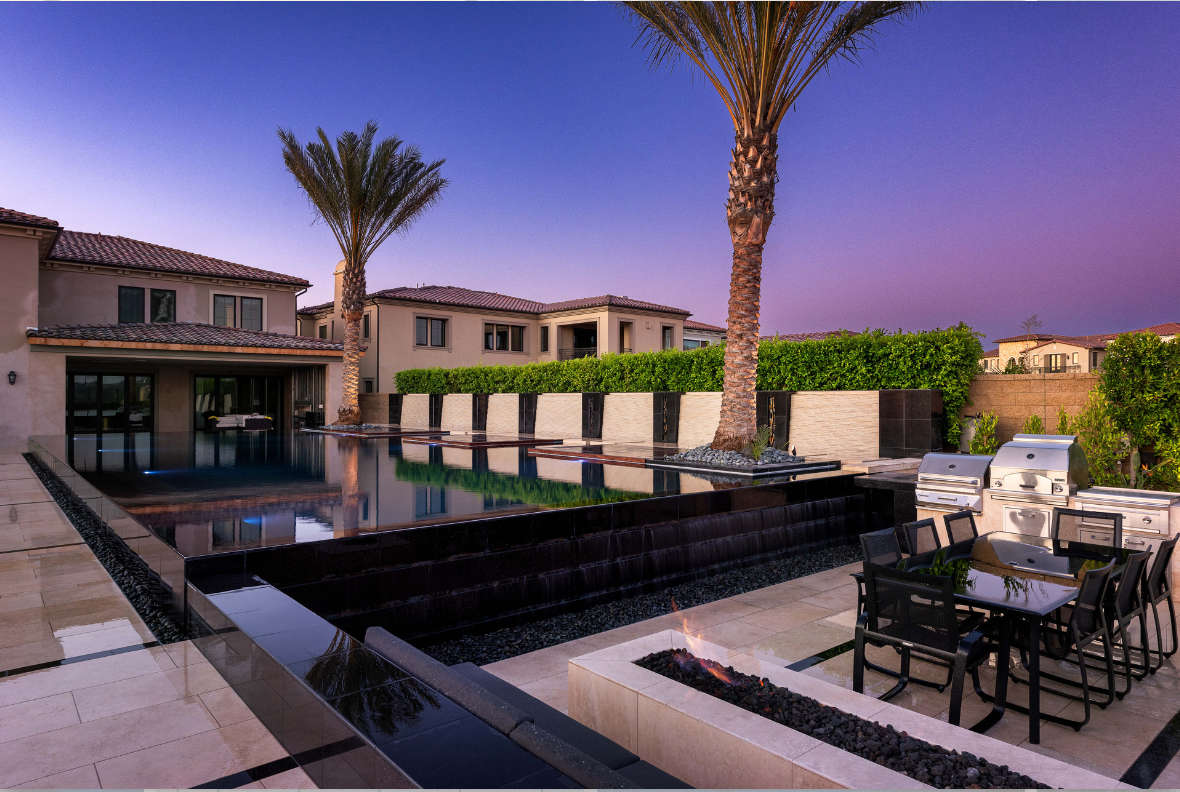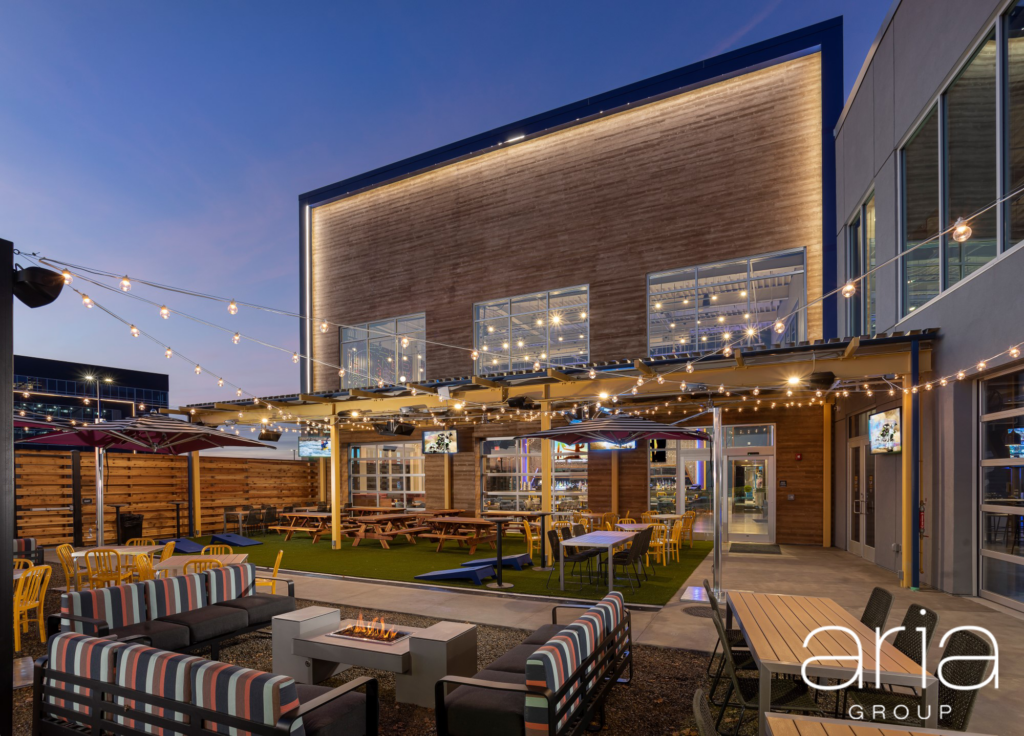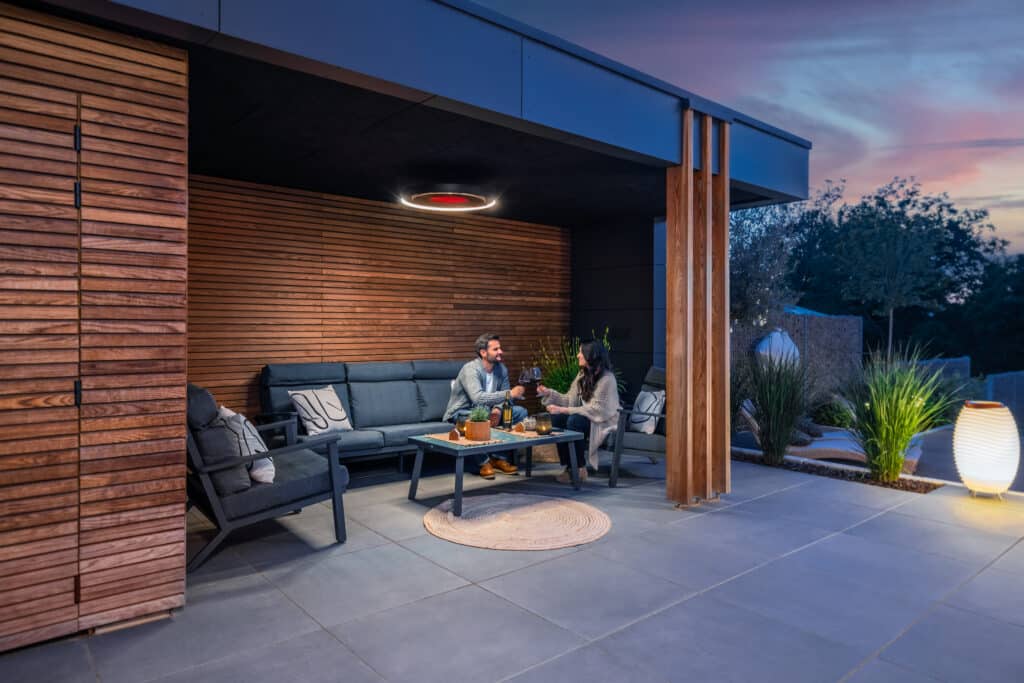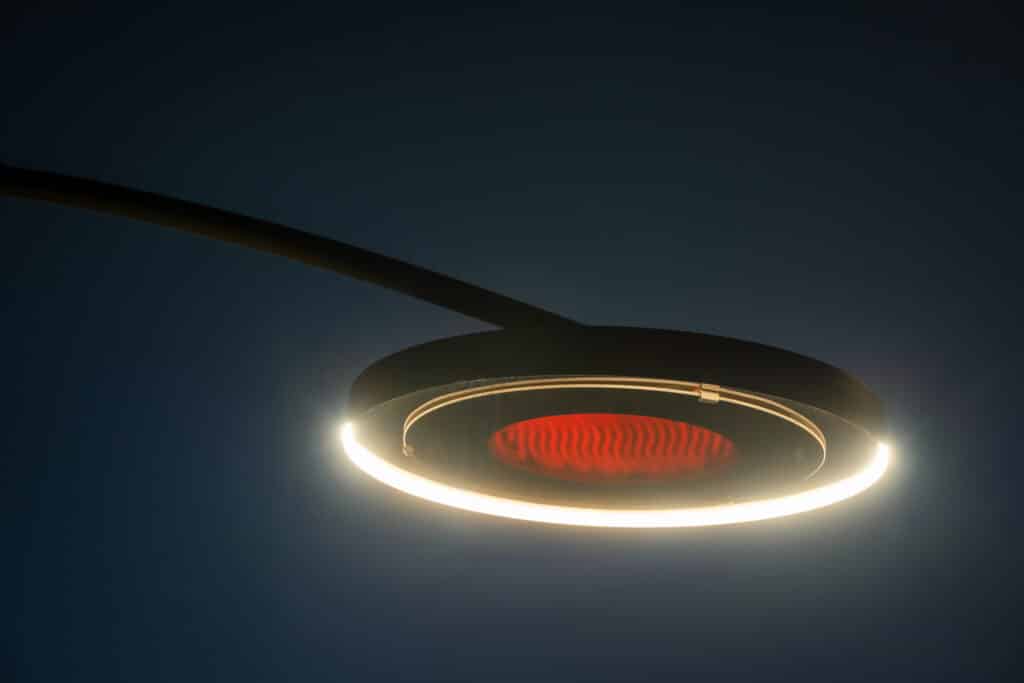
In our latest episode in collaboration with Archispeak, we explore the topic of new trends in custom residential design and construction, focusing on the integration of indoor and outdoor spaces made possible with some unique building products. In the company of our guest, Danny Wang, Principal Designer of DW Design and Build, we discuss how the integration of outdoor space designs merge with indoor spaces has become more than a trend in residential design, and some of the challenges he has had to overcome in his projects around the world.
About Danny Wang
Danny Wang started off as a General Contractor working on residential projects and decided to give the design side a shot when he noticed the designers, he was working with became too busy to turn around ideas quickly for his high demanding clients. He was able to quickly learn different 3D design programs and began thinking of off-the-cuff, extravagant design ideas that he believed his clients would enjoy.
“What happened was, the more I explored, the more receptive my clients became because they liked the fresh ideas,” says Wang.
From there, Danny Wang Design & Build was born, providing a turnkey service in designing and building extravagant and unique high-end residential projects.
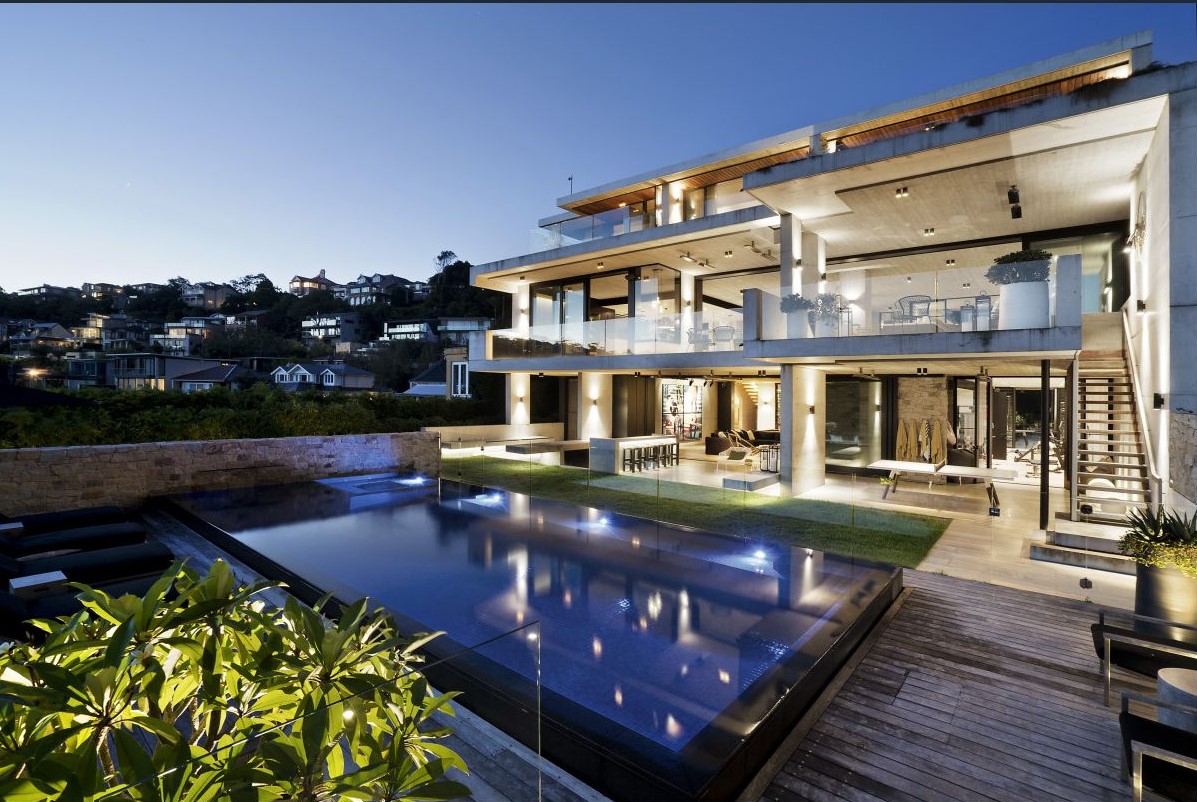
Integrating Outdoor Spaces
Danny began his design career mainly creating indoor spaces, but quickly learned that integrating indoor and outdoor spaces was a concern for his clients, as the design of the indoor space didn’t always match the aesthetic of the outdoor space. Thus, he began designing outdoor spaces that complemented the indoors.
“[Since then,] my design philosophy is – I design the outdoor space to blend-in with the indoor space because, especially with the [trend of] big doors and big windows, I treat them as one aesthetic,” states Wang. “Once you open the doors, you want [the transition] it to feel like it’s natural.”
Everything from the materials to the furniture and lighting should blend seamlessly so that one’s eye has a hard time distinguishing the indoor space from the outdoor space. To accomplish this, Wang uses materials that can be used both indoors and outdoors, such as tiles, and place them in the same design, giving the illusion of doubling the existing space.
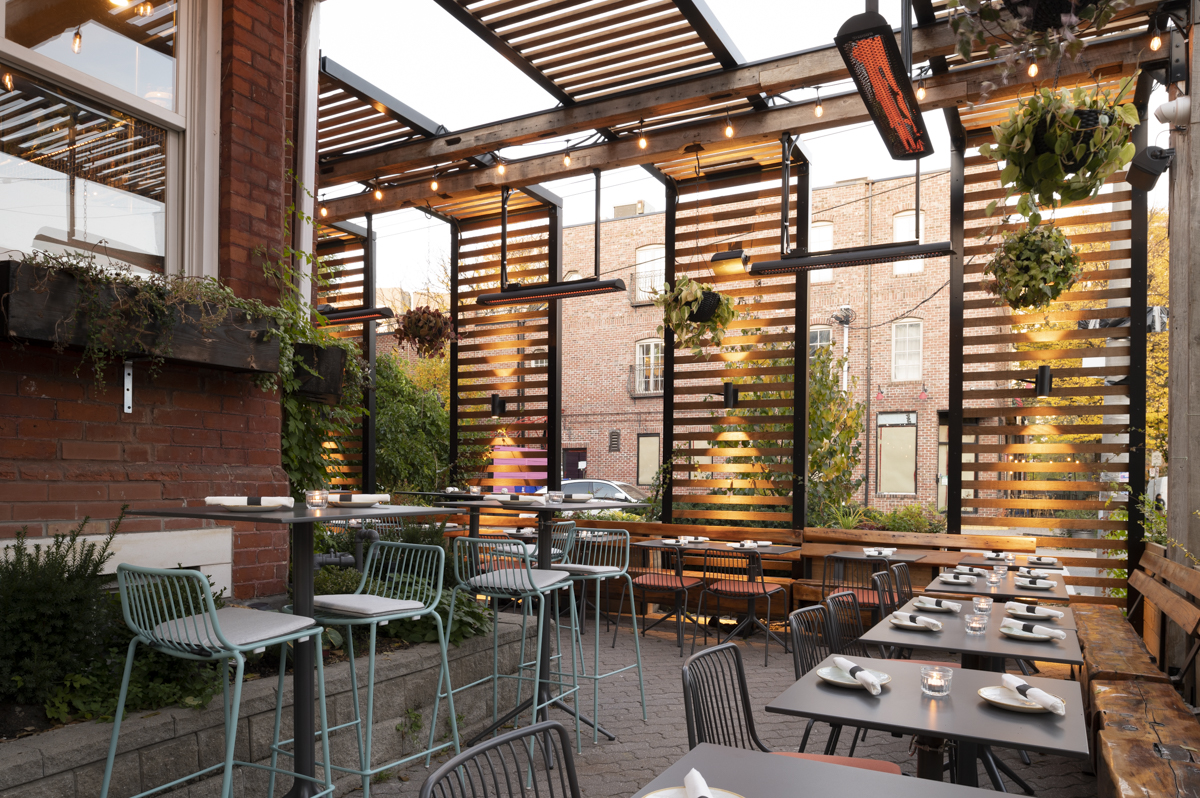
Never Miss an Episode!
Subscribe to our industry newsletter to stay up to date on innovations and trends within the built environment.
Attributes to the Shift Outdoors
According to Wang, there were many contributing factors to the shift of utilizing more outdoor spaces, especially post-pandemic.
“For a period of time where you didn’t want to go outside, you could work from home, real estate pricing was very high, and people realized that their personal well-being was important, created the perfect-storm where now we’re promoting [the] outdoors, we’re promoting staying home, kind of just pushed forward this outdoor indoor living the last couple of years.”
This in turn created more demand for additional dwelling units (ADU’s such as pool houses, home workplaces, theaters, gyms, and additional amenities to create the feel of having more space.
“We definitely see a lot of need for more space, especially in the last couple of years,” says Wang. “We’ve been doing a lot more additions [of amenities], adding more [functional] square footage than before.”
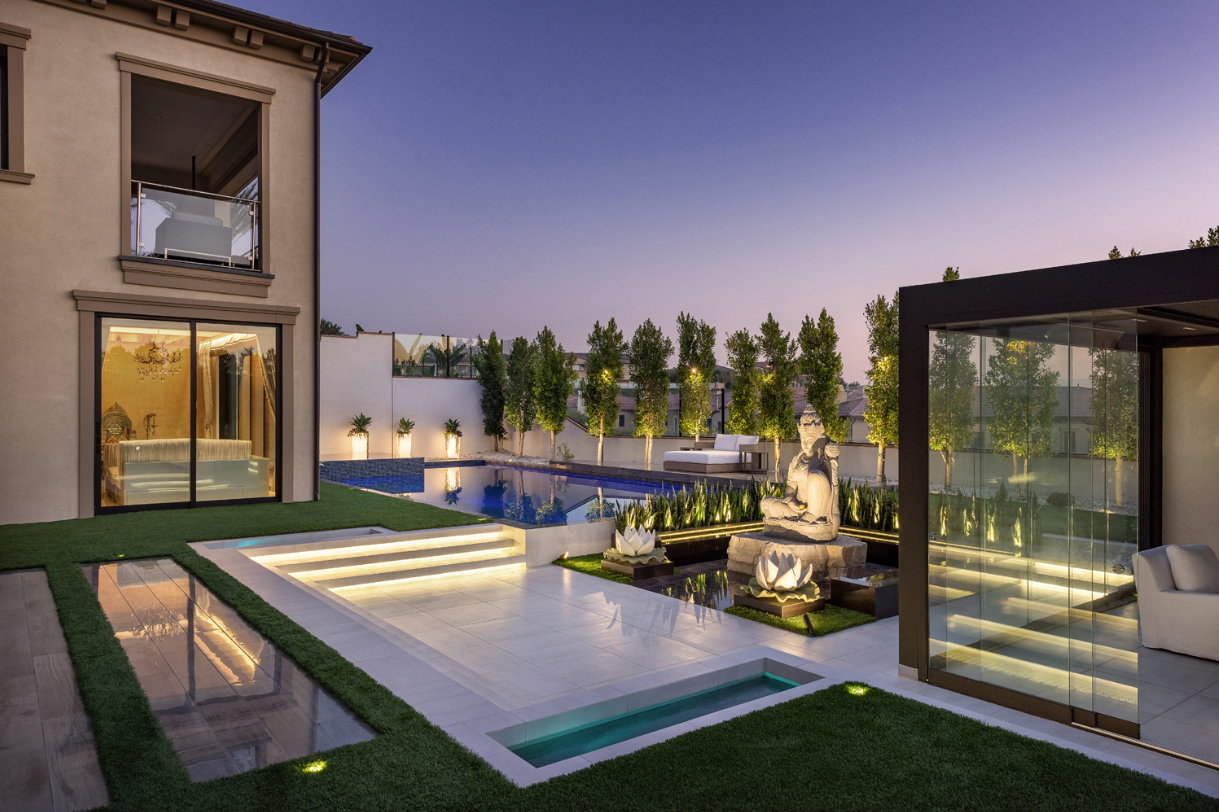
Custom Residential Design Trends
With this shift towards utilizing more residential space, especially when it comes to outdoors, came an influx of different trends for amenities when creating outdoor spaces.
“The number one trend we see is the request for pickleball courts,” describes Wang. “[Additionally requests for], ice plunge areas, saunas and steam rooms also picked-up a lot. And of course, outdoor kitchens and outdoor heating picked up as well.”
Additionally, taking more traditional amenities and making them customized became very popular, such as adding built-in amenities within a pool, including sunken seating, swim-up bars, lazy rivers and water slides.
Challenges of the Outdoors in Differing Climates
Some challenges Danny has faced on his custom residential projects around the world include getting familiar with the differing building codes and fuel sources within different areas as well as dealing with the differing weather conditions. His main takeaway is don’t be afraid to ask questions.
“What I’ve been doing is consulting with people who are local, [asking] how do you guys do this [when I’m not sure], and they’ll give you how they do it from both [a design and construction standpoint],” says Wang.
When it comes to dealing with differing weather conditions, Danny has been successful in finding ways to pivot plans to incorporated solutions to counteract these conditions. “If there’s going to be 100mph winds, [I suggest] let’s do an indoor pool. I it’s a colder climate, [adding] outdoor heaters [allows you to] heat it up so warm that it feels like the indoors.” Some examples of ways he has been able to pivot plans to incorporate solutions that counteract these challenges include adding fixed outdoor heaters, adding heating tubes under driveways to melt and clear snow, and adding retractable walls to outdoor areas.
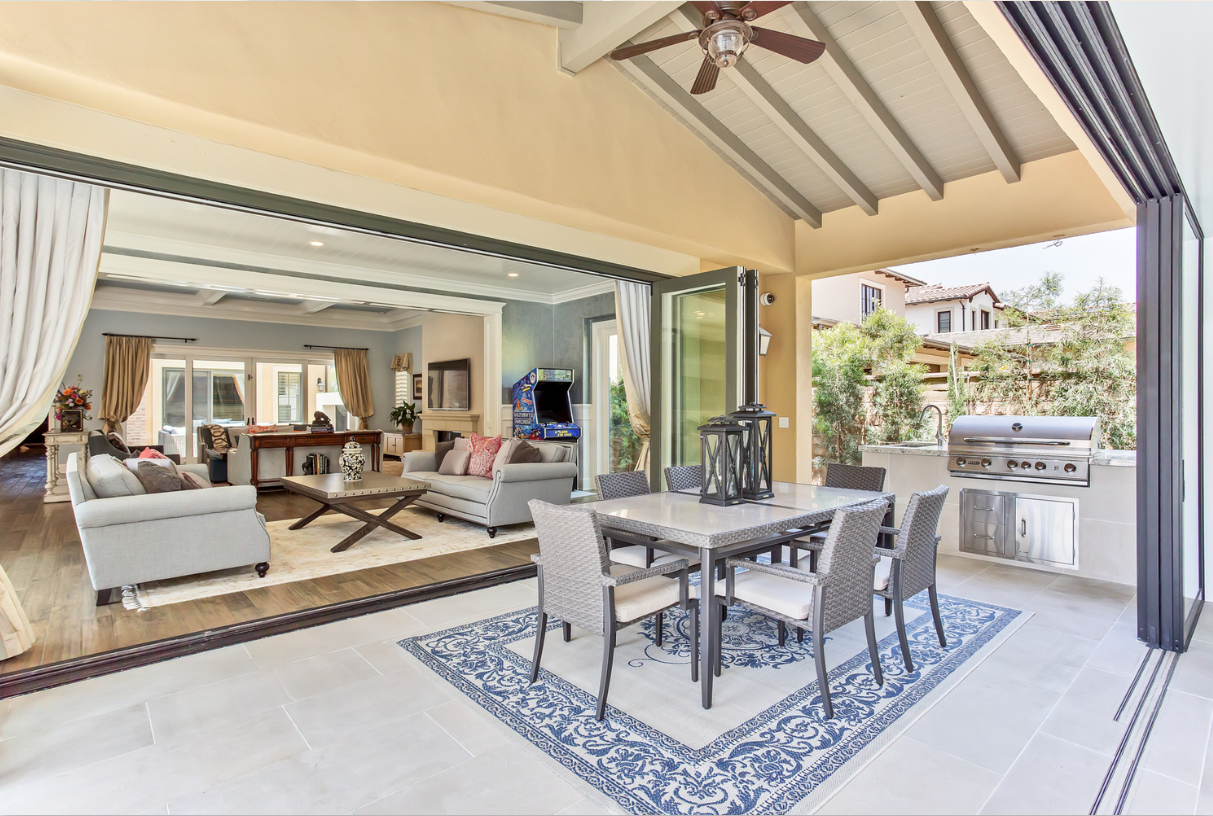
New Opportunities in Designing Residential Outdoor Spaces
When blending indoor spaces to the outdoors, there has been an advancement in the design of materials that can be used within both spaces by manufacturers.
“One of the things that has changed a lot since say, 5 years ago, is now they’re making porcelain tiles so durable and so realistic looking and indestructible”, says Wang. “That’s kind of of been my go-to versus using natural stone because now when you put them side-by-side, you can’t really tell the difference.”
He notes some additional products that have seen advancements in the past few years including outdoor heaters, outdoor lighting, outdoor audio, outdoor televisions, and the integration of smart home systems for outdoor products.
“One good example is Bromic Heaters. They’re very clean and sleek looking, and some of them have integrated LED lights in them so they become more functional than just having [a heater] with two red tubes across [or] a gas heater that gives off little flames”, says Wang. “I think that’s an advancement in design [that separates Bromic from their competition].”
He concludes, “I think one of the things that’s interesting about all the different products, the heating, the speakers, the TV’s, and even the tile, most of it is about being able to integrate it within the project without really seeing it there. This movement has kind of pushed people to say hey, you know what, I want the outdoors to look nice, I want the outdoor speakers to sound nice, I want this, I want that, and it just pushes the bars [that were] traditionally here [for these products].”
Redefining Modern Living
In the conversation between Danny Wang and hosts of Archispeak Podcast, Evan Troxel and Cormac Phalen, we’ve uncovered the evolution of custom residential design—where indoor and outdoor spaces seamlessly blend into a harmonious living experience. From his journey as a General Contractor turned Principal Designer at DW Design and Build, to the surge in demand for personalized outdoor amenities like pickleball courts and ice plunge areas, Danny’s insights shed light on the shift towards integrating the outdoors into our homes. Join us on our podcast episode to delve deeper into Danny’s world, exploring the art of crafting spaces that erase boundaries between indoors and outdoors, redefining modern living. Listen now to discover the magic of creating your own indoor-outdoor sanctuary.

